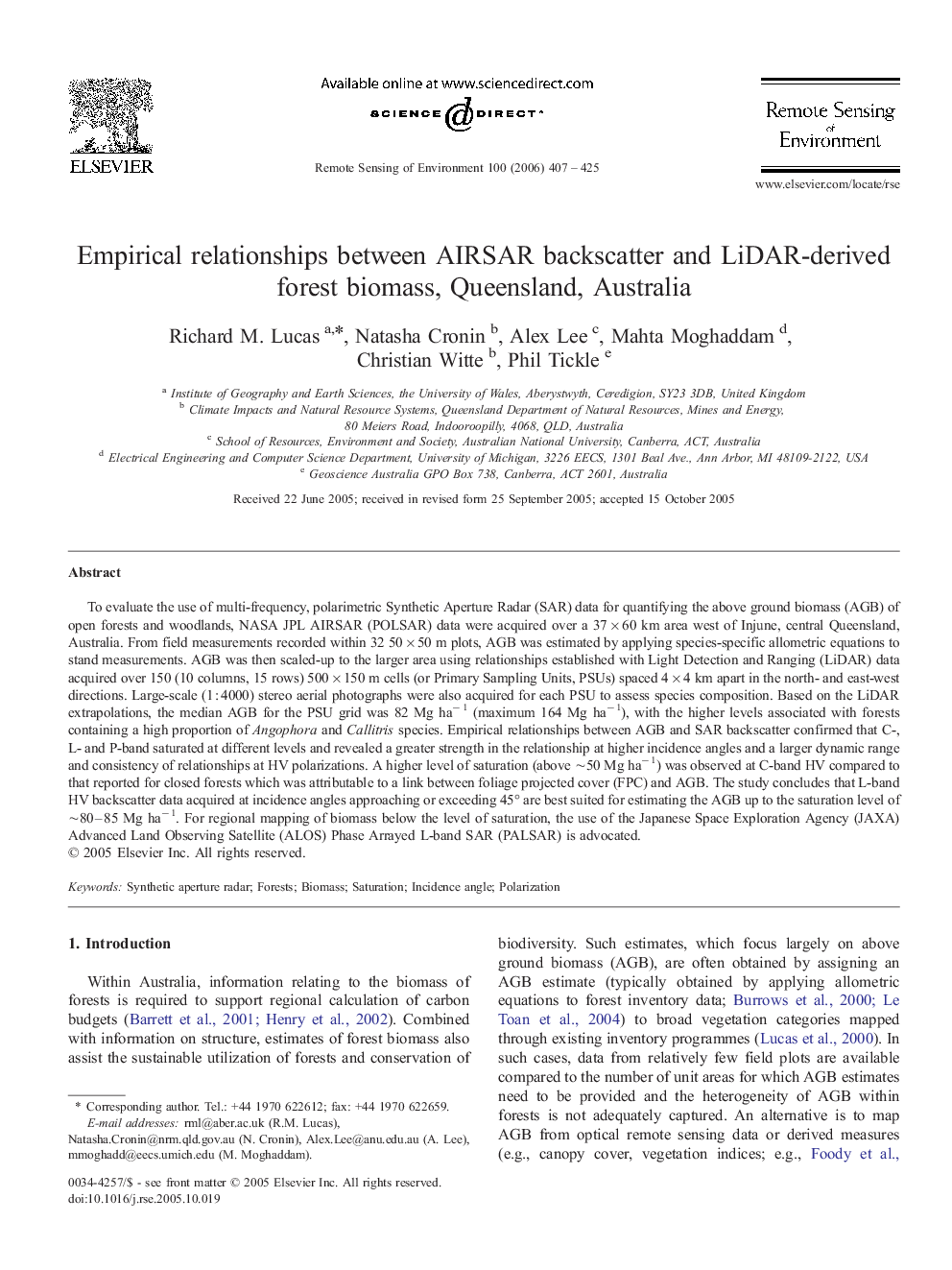| کد مقاله | کد نشریه | سال انتشار | مقاله انگلیسی | نسخه تمام متن |
|---|---|---|---|---|
| 4461200 | 1621375 | 2006 | 19 صفحه PDF | دانلود رایگان |

To evaluate the use of multi-frequency, polarimetric Synthetic Aperture Radar (SAR) data for quantifying the above ground biomass (AGB) of open forests and woodlands, NASA JPL AIRSAR (POLSAR) data were acquired over a 37 × 60 km area west of Injune, central Queensland, Australia. From field measurements recorded within 32 50 × 50 m plots, AGB was estimated by applying species-specific allometric equations to stand measurements. AGB was then scaled-up to the larger area using relationships established with Light Detection and Ranging (LiDAR) data acquired over 150 (10 columns, 15 rows) 500 × 150 m cells (or Primary Sampling Units, PSUs) spaced 4 × 4 km apart in the north- and east-west directions. Large-scale (1 : 4000) stereo aerial photographs were also acquired for each PSU to assess species composition. Based on the LiDAR extrapolations, the median AGB for the PSU grid was 82 Mg ha− 1 (maximum 164 Mg ha− 1), with the higher levels associated with forests containing a high proportion of Angophora and Callitris species. Empirical relationships between AGB and SAR backscatter confirmed that C-, L- and P-band saturated at different levels and revealed a greater strength in the relationship at higher incidence angles and a larger dynamic range and consistency of relationships at HV polarizations. A higher level of saturation (above ∼50 Mg ha− 1) was observed at C-band HV compared to that reported for closed forests which was attributable to a link between foliage projected cover (FPC) and AGB. The study concludes that L-band HV backscatter data acquired at incidence angles approaching or exceeding 45° are best suited for estimating the AGB up to the saturation level of ∼80–85 Mg ha− 1. For regional mapping of biomass below the level of saturation, the use of the Japanese Space Exploration Agency (JAXA) Advanced Land Observing Satellite (ALOS) Phase Arrayed L-band SAR (PALSAR) is advocated.
Journal: Remote Sensing of Environment - Volume 100, Issue 3, 15 February 2006, Pages 407–425